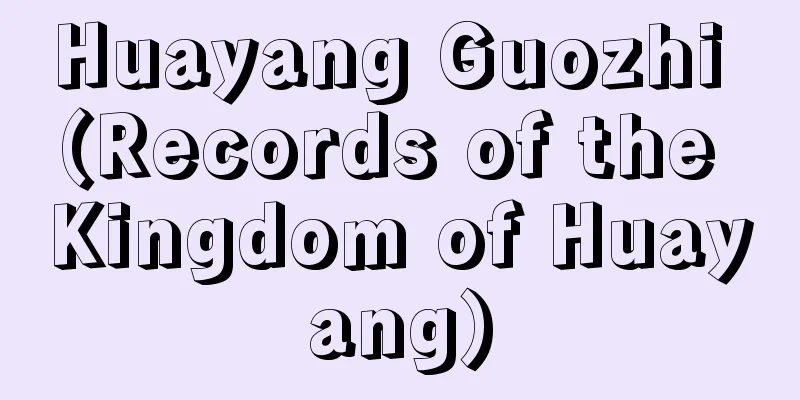Wanderings - Horouki

|
A novel by Hayashi Fumiko. It was serialized in six installments in Women's Art from August 1928 to 1929. It was published by Kaizosha in 1930 as part of the New Literature Series and became a bestseller, leading to the publication of the second part, Continued Wanderings, by the same company in the same year. After World War II, the part that remained unpublished for fear of being banned was serialised intermittently as the third part in Japanese Novels from 1947 to 1948, completing the story. Wanderings - Part 3 was published by Rume Shoten in 1949. It was a semi-autobiographical coming-of-age novel based on a diary she had written after being inspired by Hunger (1890) by the Norwegian author Knut Hamsun, and was her breakthrough work. Prefaced with a recollection of her childhood without a hometown, the book vividly depicts, in diary form and including poems, the protagonist's wandering life after graduating from girls' school and moving to Tokyo, during which she repeatedly changes jobs, lives with partners who abandon her, and roams the city's lowest classes for four or five years until she settles down to get married. In an era of global recession, the protagonist's anarchic freedom does not sink into nothingness, she does not succumb to poverty and humiliation, and she does not lose her bond with her mother, her faith in humanity, and her dream of becoming a writer, creating a bright world. [Shizuko Hashizume] "New Edition of Wandering Chronicles (Shincho Bunko)" ▽ "Naoko Itagaki's "Hayashi Fumiko" (1956, Tokyo Life Publishing)" Source: Shogakukan Encyclopedia Nipponica About Encyclopedia Nipponica Information | Legend |
|
林芙美子(ふみこ)の小説。1928年(昭和3)8月から29年にかけ『女人(にょにん)芸術』に6回連載。30年改造社から「新鋭文学叢書(そうしょ)」の一冊として出版、ベストセラーとなったため同年同社から第二部『続放浪記』出版。第二次世界大戦後、発禁を恐れて未発表であった部分を、47~48年『日本小説』に第三部として断続連載、完全なものとなった。49年『放浪記―第三部』留女(るめ)書店刊。ノルウェーの作家クヌート・ハムスンの『飢え』(1890)に触発されて書きためた日記をもとにした、半自伝的青春小説で出世作。ふるさとをもたない少女期の回想を序に置いて、女学校を終え上京以後、結婚に落ち着くまでの4、5年間の放浪生活、すなわち職を転々とし、捨てられる同棲(どうせい)を繰り返し、都会の底辺をはい回る主人公の姿を、詩を含む日記体で生き生きと描く。世界的不況の時代、主人公のアナーキーな自由が虚無に陥らず、貧困や屈辱にめげず、母への絆(きずな)、人間への信頼、文学への夢を失わない、明るい世界となっている。 [橋詰静子] 『『新版放浪記』(新潮文庫)』▽『板垣直子著『林芙美子』(1956・東京ライフ社)』 出典 小学館 日本大百科全書(ニッポニカ)日本大百科全書(ニッポニカ)について 情報 | 凡例 |
>>: Wandering students - clerici vaganti (Latin)
Recommend
Ellukan - Ellukan
…One of the most well-known clowns who appear as ...
Folz, H. (English spelling) FolzH
...In the 16th century, the content of the Meiste...
α-Cyanohydrin - Alpha Cyanhydrin
...A general term for compounds that have both a ...
Cornelius, Peter von
Born: September 23, 1783? Dusseldorf Died March 6,...
Naomasa Ii
Year of death: February 1, 1602 (March 24, 1602) Y...
Sławomir Mrożek (English spelling)
Polish playwright, novelist, and cartoonist. He w...
thermolig
…Using a high-speed camera, he analyzed work move...
Stalinabad
…After the establishment of the Soviet Union, it ...
Nankai Road - Something Color
During the Edo period, Edo became a major consumer...
Exchange - Aikae
…According to research by Niida Sho, the ancient ...
Cardiopulmonary ratio - shinpaikeisuu (English spelling) cardiopulmonary ratio
The Schneider test is a test that measures the hea...
Hiyama
Folk performing art. This is a type of Bangaku (mo...
Kambucha - Kambucha
…However, the birthplace of hockey is believed to...
Construction contract - kenchiku keiyaku
A contract between a building owner (client) and a...
Karl Helfferich
German financier and politician. After working as...



![Miyazaki [city] - Miyazaki](/upload/images/67ccf663bddcc.webp)





